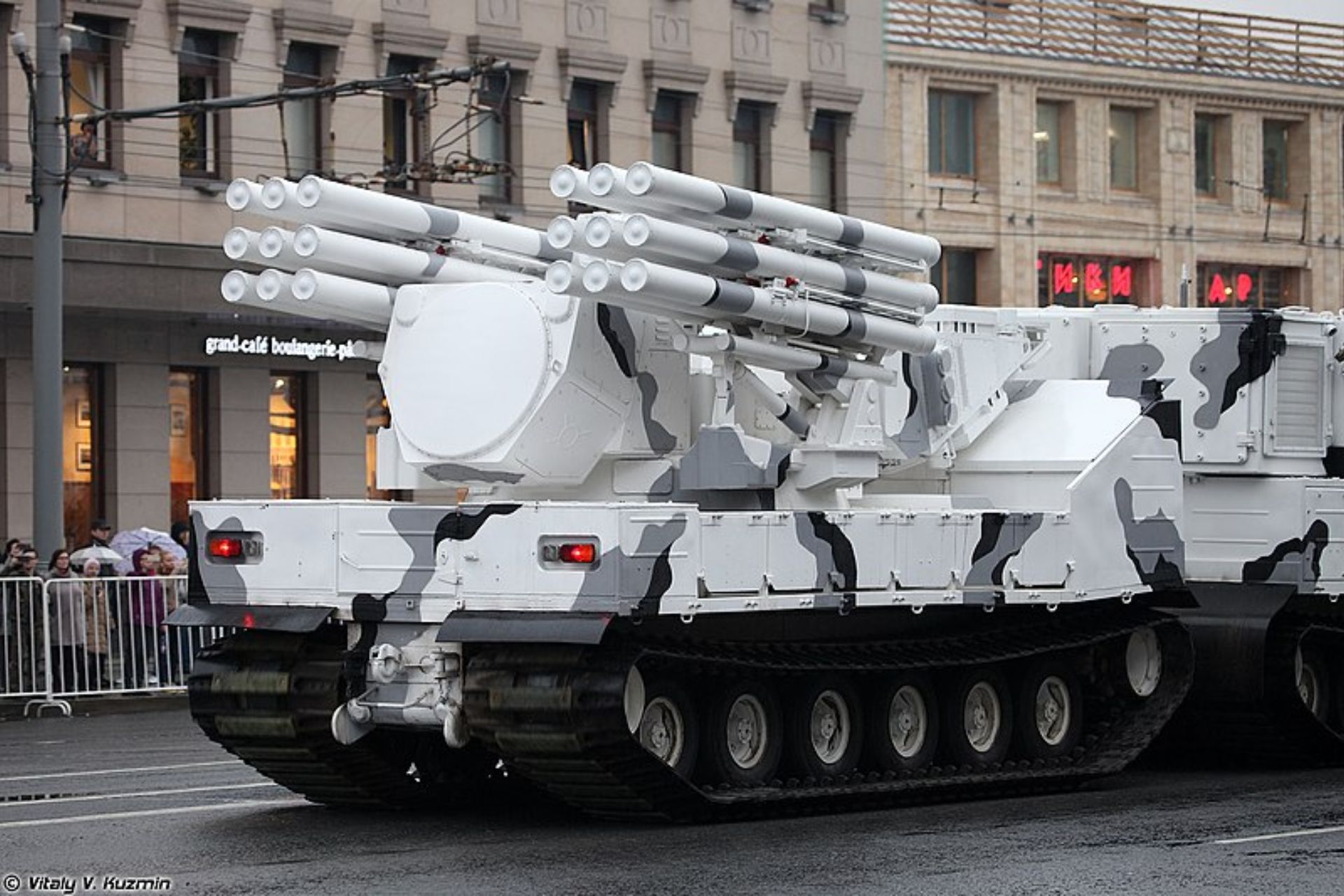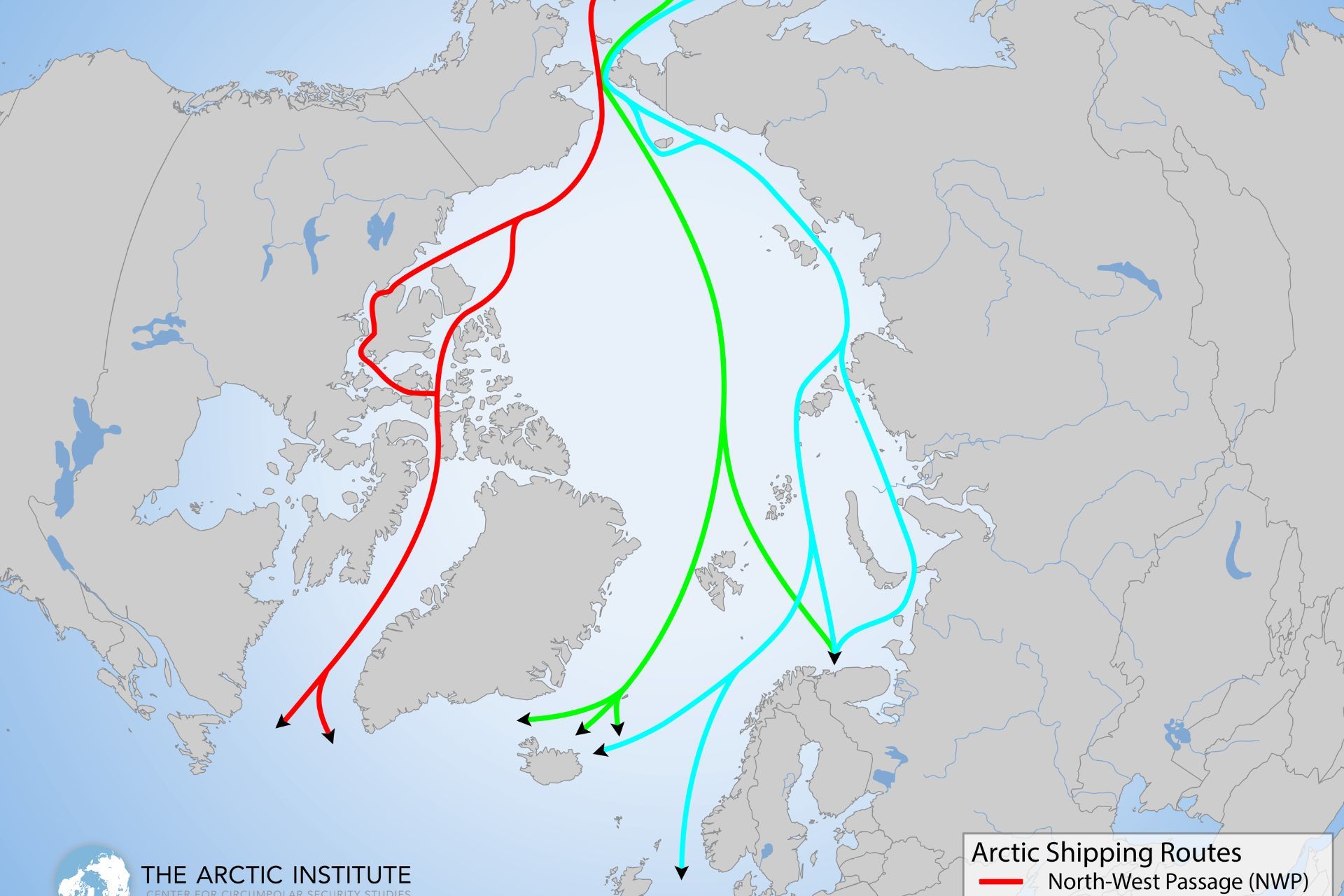Breaking News
Situation Brief | New area of tension in Arctic: concerned countries are adapting as Russia with Pantsir-SA.
Russia has developed the Pantsir-SA, a modified version of the famous Pantsir-S1 short-range air defense missile system, specifically designed to meet the unique operational demands of the Arctic region. This system, mounted on a DT-30PM tracked all-terrain vehicle, is engineered to operate in extreme climatic conditions, where freezing temperatures, heavy snow, and rugged terrain present significant logistical and operational challenges. The Pantsir-SA represents a key component in Russia's strategy to strengthen its military presence in the Arctic, a region that has become increasingly important on the international stage due to its natural resources and growing geopolitical significance.
Follow Army Recognition on Google News at this link

Pantsir-SA air defence system on DT-30PM transporter chassis (Picture source: Wikimedia)
The Arctic: A Strategic Theater in Evolution
In recent years, the Arctic has become a hotbed of new geopolitical tensions. Climate change has opened new shipping routes through the ice, facilitating access to vast reserves of natural resources beneath the Arctic Ocean, including oil, gas, and precious minerals. This situation has prompted several nations, including Russia, the United States, Canada, Norway, and China, to intensify their military presence and territorial claims in the region.
For Russia, the Arctic is of strategic importance, both economically and militarily. In addition to energy resources, the region is crucial to Russia’s national defense, particularly with the strategic role of the Northern Sea Route, which could become a key commercial pathway between Europe and Asia. This increase in military and economic activities in the Arctic has led to a growing need to protect these areas, particularly against potential aerial threats such as drones or aircraft, in a region where surveillance and logistics are extremely complex.
The Advantages of a System Adapted to Arctic Conditions
The Pantsir-SA is a direct response to these needs. Unlike the conventional versions of the Pantsir, this model is mounted on a DT-30PM chassis, a tracked all-terrain vehicle designed to tackle the most challenging terrains, including ice, snow, and unstable surfaces typical of the Arctic. This chassis consists of two vehicles connected by a steering mechanism, providing great mobility in conditions where conventional vehicles would be immobilized.
The Pantsir-SA system is equipped with the Pantsir-S1 weapons station, a combination of automatic cannons and short-range surface-to-air missiles, capable of detecting, tracking, and destroying aerial targets such as helicopters, planes, cruise missiles, and drones. Its ability to operate in reduced visibility conditions and extreme temperatures, down to -50°C, makes it an essential asset for defending Russia's strategic installations in the Arctic.

Pantsir-SA air defence system on DT-30PM transporter chassis (Picture source: Wikimedia)
Technical Specifications of the Pantsir-SA
The Pantsir-SA retains the main features of the Pantsir-S1 while being adapted to the specific challenges of the Arctic climate. It is equipped with enhanced radar and optical systems to compensate for low visibility and harsh weather conditions. It can simultaneously track multiple targets and respond quickly to threats, with a detection range of over 36 kilometers and an engagement range of 20 kilometers.
The system is armed with 12 radar-guided 57E6-E surface-to-air missiles, capable of destroying targets at altitudes up to 15 kilometers. In addition to the missiles, it is equipped with two 30 mm automatic cannons, capable of intercepting targets at a distance of 4 kilometers. This dual engagement capability, with both missiles and cannons, provides effective aerial coverage against a wide range of threats.
An Essential Tool in the Growing Militarization of the Arctic
The deployment of the Pantsir-SA marks a key step in Russia’s military expansion in the Arctic. It demonstrates Moscow’s commitment to securing its interests in a rapidly changing region. By protecting military bases, maritime routes, and key economic installations from aerial threats, this system strengthens Russia’s deterrent capability in the face of other powers present in the region.
In conclusion, the Pantsir-SA is more than just a technical adaptation. It is part of a long-term strategy aimed at ensuring Russia's military dominance in the Arctic, a region that has become the new epicenter of international tensions. Its deployment highlights the growing importance of defense systems adapted to extreme environments and the evolution of global geopolitical priorities, as Arctic nations prepare for a race to control this resource-rich region and its strategic routes.

New maritime routes in artic who will be use when artic ocean will melt due to climate change, first of them will be the blue one , more easy to sail and soutern than other ( Picture source: The artic institute )
New Maritime Route : Situation point
The Northern Sea Route is one of the three major maritime routes connecting the Pacific Ocean to the Atlantic Ocean, which is expected to open due to climate change. Not only is it farther south than the other two routes, but it is also the widest, allowing a significantly larger flow of ships. This route passes through Russian territorial waters, but it will save an immense amount of time for cargo transportation.
Russian control of this route is thus a top priority, especially considering that it could become a particularly important financial source. It is likely that regulations similar to those governing Russian airspace crossings will be implemented, especially regarding payments made by shipping companies. Today, only one company per country is authorized to cross Russian airspace, and a fee is imposed on each plane, amounting to several thousand US dollars. It can be assumed that this maritime route will face similar restrictions.
In any case, it is easy to see why Russia is adapting its equipment to the conditions of the Arctic. However, Russia is not the only country doing so; Canadian and Northern European armed forces are also following this adaptation doctrine.


























